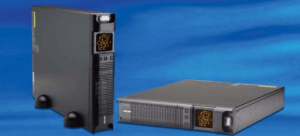You can prevent downtime and maintenance costs by installing an industrial UPS, or high temperature UPS, in stressful environments. Your company and you often spend time, money and stress on equipment downtime and maintenance costs. In a high-production facility, a stoppage can cost an enormous amount of money.
Here are 5 tips on preventing downtime for industrial applications:
1. Do a site power audit.
2. Never use an office-grade UPS. Only install an on-line, industrial UPS.
3. Check the temperature range of a UPS and whether it is UL Listed (and/or cUL, CE)
4. Make sure you have batteries made for industrial applications.
5. Look at any needed options for your particular environment.
 Do a site power audit:
Do a site power audit:
Industrial equipment is only as reliable as the power it is receiving. A facility has localized power pollution from a large amount of equipment, motors, pumps, etc. operating from the facility’s electrical system. Industrial computers, PLCs, sensors and variable speed drives can be damaged by power problems on the facility’s ac power lines.So, find out what are the specific power issues—look at temperature and humidity ranges, airborne contaminants, required battery backup time—plus any need for additional high voltage transient or lightning protection.- Never use an office-grade UPS. Only install an on-line, industrial UPS:
Most UPSs are office-grade. This UPS has not been designed to operate for sustained periods of time outside the 0°C to 40°C temperature range. So, you’re taking a risk on its reliability to function at high temperatures over time.An industrial UPS is designed for low and high temperatures often from -20°C to 55°C (or beyond). It uses robust components, batteries, plastics and enclosures to operate reliably in demanding environments. You’ll see a reduction in maintenance problems, battery replacements and downtime.
Part Two will discuss : Tips #3 to 5 in depth…

 Do a site power audit:
Do a site power audit: